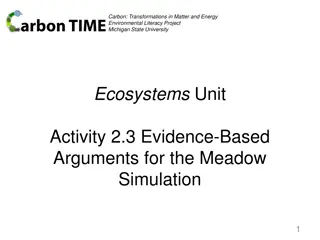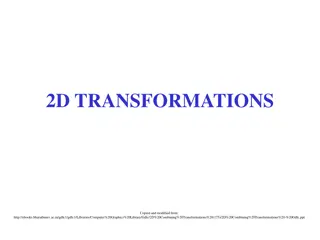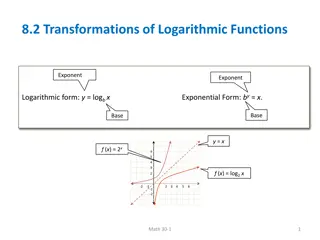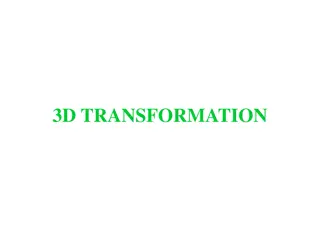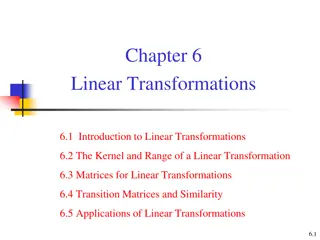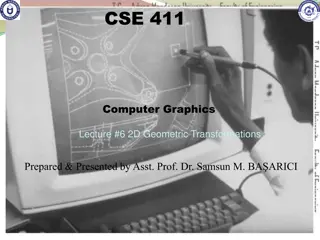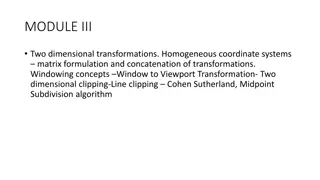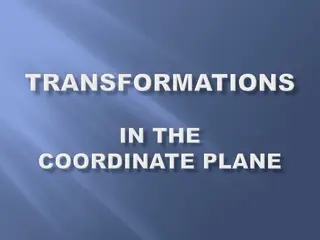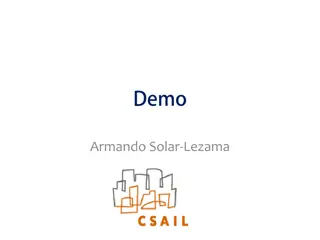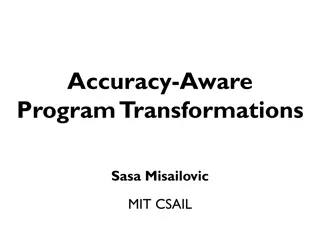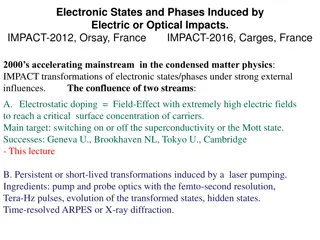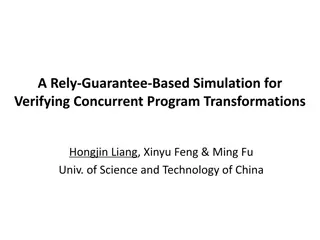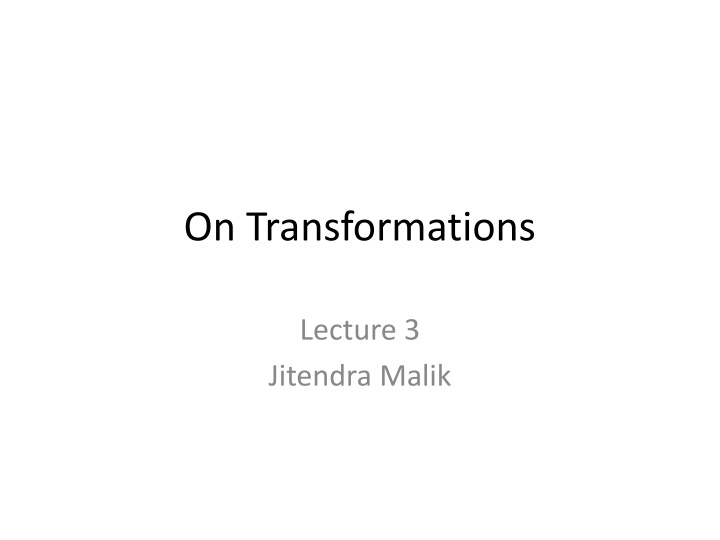
Understanding Transformations in Mathematics
Explore the world of transformations with topics like rotations, reflections, rigid body motions, orthogonal matrices, parameterizing rotations in 3D, and more. Learn about affine transformations and their definitions, and delve into the application of matrix exponential in solving differential equations.
Download Presentation

Please find below an Image/Link to download the presentation.
The content on the website is provided AS IS for your information and personal use only. It may not be sold, licensed, or shared on other websites without obtaining consent from the author. If you encounter any issues during the download, it is possible that the publisher has removed the file from their server.
You are allowed to download the files provided on this website for personal or commercial use, subject to the condition that they are used lawfully. All files are the property of their respective owners.
The content on the website is provided AS IS for your information and personal use only. It may not be sold, licensed, or shared on other websites without obtaining consent from the author.
E N D
Presentation Transcript
On Transformations Lecture 3 Jitendra Malik
Rotations and reflections are examples of orthogonal transformations
Rigid body motions (Euclidean transformations / isometries) Theorem: Any rigid body motion can be expressed as an orthogonal transformation followed by a translation.
The solution to this differential equation uses the matrix exponential
Affine transformations Definition: An affine transformation is a nonsingular linear transformation followed by a translation.
Number of parameters required to specify isometry vs. affine transform In 2D In 3D
Invariants under transformation (Properties that remain unchanged) Lengths Parallelism Angles Midpoints Area
The big picture ... But are affine transforms as general as we need to be?
Projective Transformations Under perspective projection, parallel lines can map to lines that intersect. Therefore, this cannot be modeled by an affine transform! Projective transformations are a more general family which includes affine transforms and perspective projections. Projective transformations are linear transformations using homogeneous coordinates. We will study them later in the course.




